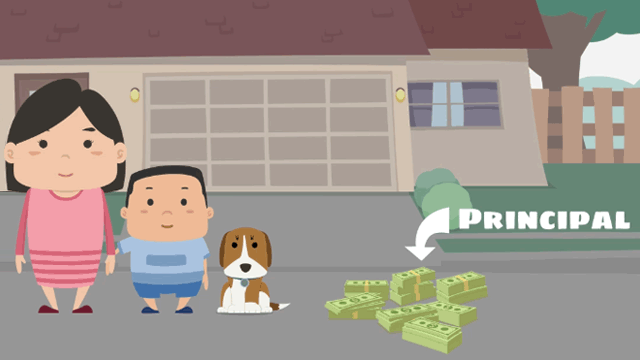Principal
Related Terms: Loan Balance
A loan’s actual balance, excluding the interest owed for borrowing, is called the principal. This is the original amount borrowed from the lender that needs to be repaid, in addition to all the other costs of borrowing that amount (interest, insurance, and taxes). The principal is paid monthly over the term of the mortgage.

Principal balance is the amount left to pay on a loan. As you pay this balance, you’re earning more equity on your house. However, mortgages (even fixed rate loans) are designed in a way that your initial monthly payments distribute more funds towards interest than principal.
In order to pay off the loan sooner, gain equity on the property, and avoid paying too much interest, many borrowers choose to pay extra towards the principal balance every month, called “prepayments.” It is estimated that making one additional monthly payment every year can cut down the term of the loan by five years.
When taking on a mortgage, it helps if you understand exactly how your money is being allocated in order to make the most use of the loan. The structure of your payments will determine the final cost you’ll incur and how long it will be until you finally own your home.
In order to pay off the loan sooner, gain equity on the property, and avoid paying too much interest, many borrowers choose to pay extra towards the principal balance every month, called “prepayments.” It is estimated that making one additional monthly payment every year can cut down the term of the loan by five years.
When taking on a mortgage, it helps if you understand exactly how your money is being allocated in order to make the most use of the loan. The structure of your payments will determine the final cost you’ll incur and how long it will be until you finally own your home.

Do you know what's on your credit report?
Learn what your score means.





